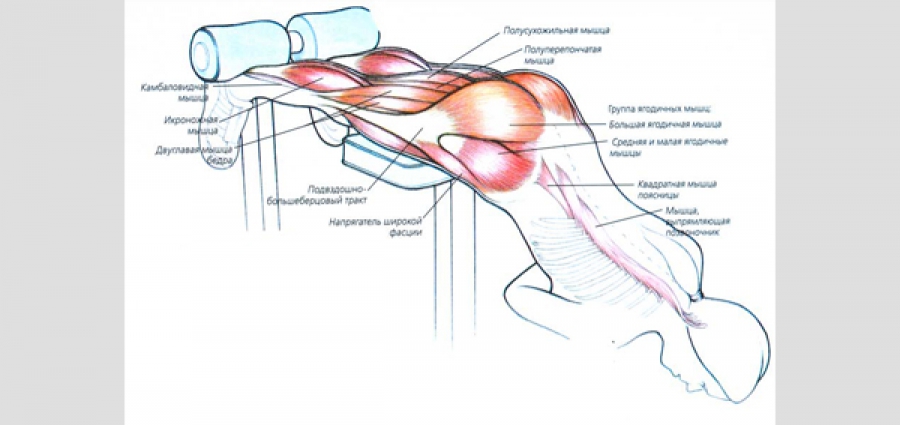The hyperextension torso extension exercise perfectly strengthens and keeps the muscles of the lower back and the muscles of the back of the thigh in good shape.
ОIt is simply necessary for athletes who work with large working weights, since the lower back area is the weak link.
Content
Applications and benefits of hyperextensions
Extension allows you to work out and strengthen the extensor muscles of the spine. It is a very necessary accessory exercise to improve the result and prevent injury in such important basic exercises as deadlift and squats, in which a large load falls on the lower back.
A strong lower back and core muscles are also important for other strength movements, such as the bench press or bent over row.
On what to perform
You can perform this exercise on a special simulator for hyperextensions, on a press bench, on a Scott bench, on a bench press with a roller. The main thing is that you feel comfortable and hyperextension is performed correctly. We can say that this will be your power simulator for the lower back.
Execution technique
- We take the starting position on the bench
- We strain the body and begin lifting the torso to a level of about 90 degrees.
- We return to the starting position and perform the required number of repetitions
It is not recommended to raise the torso much higher than the parallel, this is fraught with injuries. You can perform both without weight and using additional weights, you can hold a pancake from a barbell, a dumbbell and, at the most advanced level, a barbell in your hands.
With the option of performing hyperextension with weight, there is of course some risk, since the extensors of the spine are easy to injure, but when performed correctly with weight, we strengthen the muscles of the lower back, connect the back of the thigh, i.e. we perform an excellent auxiliary exercise, increase the backbone strength, effectively strengthen the lumbar muscle block and more.
Implementation options
- Reverse hyperextension. This variation involves lifting not the torso but the legs. It is performed at different angles, with weight, rubber and without. There is also a special simulator invented by Louis Simmons.
- Hyperextension with a barbell at an angle. This exotic option is offered by the famous Westside Barbell powerlifting school, promising super results. Here's how it's done:
Conclusions
It makes sense to include all types of hyperextension in the training process, but of course you should not do them all at once, but you need to alternate them. With the build-up of working weights, you should definitely not rush. Do not forget that this is still an auxiliary exercise, progress is certainly needed, but very smooth.
You can put it at the beginning of the workout as a warm-up, without weight. Or at the end as a finisher already with weights.
Q&A about regular hyperextensions
Who can perform?
It is very desirable to do them for everyone who is engaged in strength training.
Can you do hyperextension for back pain?
Yes, but very neatly and without extra weight. For acute pain, it is better not to do it.



